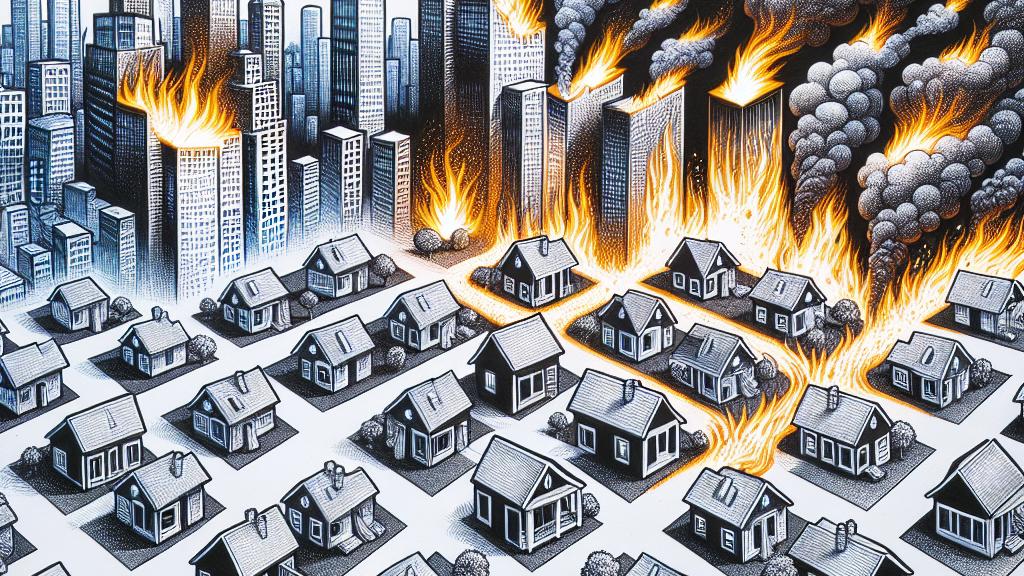Understanding Urban Firestorms and How to Prevent Them
Overview
- Urban firestorms are fierce phenomena driven by climate change and urban expansion.
- They turn homes into fuel, igniting catastrophic fires that spread swiftly.
- Strategic design and community awareness are crucial for preventing these disasters.

What are Urban Firestorms?
Urban firestorms are extreme and destructive fires that engulf city landscapes, transforming once vibrant neighborhoods into mere ashes. Take, for example, the devastating blazes in California—particularly in Los Angeles—where homes become both sanctuary and tinder within minutes. Unlike forest fires that typically spread through vegetation, urban firestorms are truly unique because they thrive on the density of buildings. It’s frightening to think that one small spark can trigger a chain reaction, where flames leap from house to house. This escalating threat reveals an urgent need for communities to prepare and adapt.
The Mechanics of Fire Spread
Understanding how urban firestorms spread is essential, as it involves a combination of environmental conditions and human factors. Severe weather patterns lead to these catastrophic blazes; fierce winds combine with dry, parched conditions to create an explosive situation. Imagine a scenario where Santa Ana winds sweep through Los Angeles—acting as a relentless force, they carry embers from one flaming structure directly into another. Researchers note that radiant heat can travel up to several feet, igniting nearby homes without direct contact. This urgency highlights the importance of awareness and proactive measures in potential fire zones.
Prevention Strategies
To effectively combat urban firestorms, community planning and individual actions are paramount. A simple yet effective solution involves increasing the distance between homes; experts recommend a minimum of six meters to help mitigate the risk of flame transfer. Additionally, employing fire-resistant building materials, such as brick or metal, can serve as a vital line of defense. Homeowners should regularly maintain their properties, ensuring that yards are free of dry leaves and flammable debris. Together, as climate change poses growing threats, these strategic preventative measures offer hope and safety to communities faced with the specter of urban firestorms.

Loading...